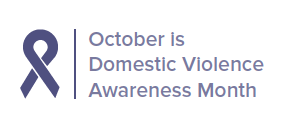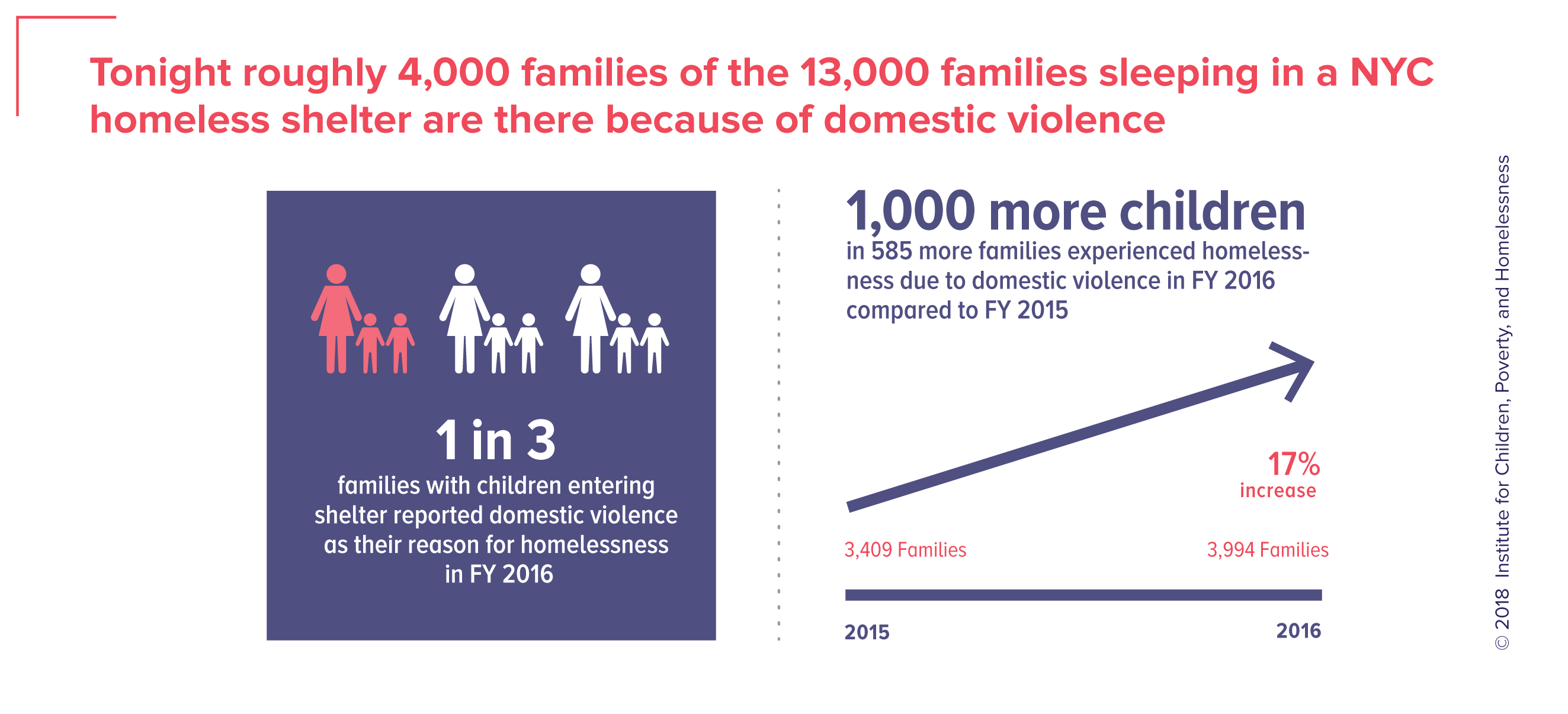
Domestic violence is a highly emotional issue that affects not only adults, but children as well. Domestic violence not only results in emotional turmoil, but also in social, economic, and housing instability for parents and their children. No community is immune; domestic violence is present in every community across the country.
What is not often discussed is the intimate connection between domestic violence and homelessness. National estimates are that roughly 80% of homeless mothers with children have previously experienced domestic violence. Even with its strict and limited definition of homelessness, applying this estimate to HUD’s most recent data reveals that over 230,000 children living in shelter have been exposed to the traumatic and long-term effects of domestic violence at some point. At a time when the nation is experiencing a national crisis of child homelessness, we can no longer afford to ignore this critical connection.
In New York City, where child and family homelessness is at an all-time high and growing, domestic violence has consistently been among the leading causes of family homelessness. In FY 2016 alone, approximately 4,000 families and an estimated 7,000 children were homeless because of domestic violence. While shocking, these figures do not capture the totality of NYC families with children that experience housing instability due to domestic violence, such as the unquantified number of families living doubled-up after fleeing their abusers, or the additional 1,152 families and 2,000 children, that were served in specialized domestic violence emergency shelters in June 2016 alone.

Do I stay with my abuser if there is nowhere else to stay?
Housing—whether temporary or permanent—is a primary concern for survivors of domestic violence. The lack of domestic violence and homeless shelter capacity in increasing numbers of communities across the country can leave families with nowhere to escape their abuser. According to the National Census of Domestic Violence Services, in just one day in 2017, more than 40,000 domestic violence survivors across the country slept in an emergency shelter or transitional housing. Even worse, a staggering 196,000 requests for shelter from domestic violence victims were unmet in 2014 due to lack of program capacity. An alarming number of adults and children were left with no option but to stay with their abuser or seek immediate safe haven in unstable and sometimes unsafe temporary housing.
How do I achieve safety when I lack financial security?
When considering next steps for housing, safety is paramount as survivors are often in fear for their lives and the lives of their children. Very often, survivors fleeing abusive relations have limited financial resources, and are left with no savings and bad credit. Many have been prevented from going to school or working outside the home and lack job skills or a consistent work history. Adding to this, they do not have the option of staying with family or friends as many other homeless families do, because of their fear of being easily found by their abuser. These are many of the factors that highlight how critical it is for survivors and their children to be able to access the confidential services provided by domestic violence shelters. For those families who enter the homeless shelter system, they shed light on the importance of providing services to meet the unique needs of homeless families so that they can achieve stability.
Once in shelter, homeless families with children and in particular those with histories of family violence, have often faced housing discrimination when trying to find permanent housing. Many domestic violence survivors face eviction after calling the police on their abuser or when there is property damage following a violent incident, making it harder for them to obtain housing in the future. For all these reasons, extended support services are especially crucial for survivors and their children. Housing services must provide multifaceted supports tailored to the special needs of this population, including trauma-informed care for parents and children, tight safety measures, housing search assistance, job training, child care, and flexible financial support.
How do I help my children thrive and overcome the trauma we have experienced?
Helping survivors—particularly those who are homeless—get back on their feet can not only save their lives, but also help mitigate the potentially lifelong and intergenerational impacts on their children. Studies have shown that one in four teenagers aged 14 to 17 had witnessed an assault involving a parent. These children who witnessed domestic violence are at increased risk of experiencing anxiety, withdrawal, aggression, depression, problems in school, and are more likely to be involved in abusive dating relationships. A recent ICPH analysis of the CDC’s Youth Risk Behavior Survey data shows that nearly 25% of homeless high schoolers in states that implemented the survey reported being physically abused, and one in five were forced into sexual activity by a partner.
Children who witnessed domestic violence as children are more likely to experience or perpetrate domestic violence as adults. To break the cycle of abuse present in the lives of far too many families, we must understand how domestic violence puts families at risk for homelessness and how the lack of services for families can have tremendous mental and physical effects. Now is the time to accept the intimate connection between domestic violence and homelessness before we introduce yet another generation of children to the cycle of intergenerational trauma and poverty.
Learn More
A Neighborhood Look at Domestic Violence as a Driver of Homelessness in NYC
Dating Violence and Homeless Students
Domestic Violence Infographic
Survivors of Domestic Violence Learn Self-Care